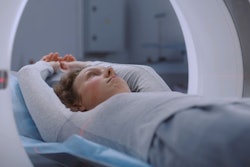The use rate of CT pulmonary angiography (CTPA) for the diagnosis of pulmonary embolism (PE) has increased among pregnant women -- but outcomes from these studies are often negative, researchers have reported.
A team led by Sameer Goyal, MD, of Northwell Health, Manhasset, New York, discovered that the rate of CTPA exams for PE among pregnant patients increased by more than 70% over a 10-year time period without a simultaneous increase in positive findings -- results that underscore the importance of assessing the risk of radiation exposure in this group. The study findings were published March 18 in the Journal of the American College of Radiology.
"[Our study highlights] the need to consider the radiation risks and costs of advanced imaging in specific patient populations," the investigators noted.
Pulmonary embolism is a common cause of death in pregnancy – mortality rates can be as high as 20% – but diagnosing it can be tricky because its symptoms can mimic normal pregnancy changes, Goyal and colleagues explained. CTPA is an effective way to diagnose PE, but it exposes both women and fetuses to radiation. The group investigated the 10-year trend in use of CTPA among pregnant women via a study that included data from 707 patients. Of these, 92.5% underwent CTPA and 7.5% underwent lung scintigraphy between 2007 and 2016. Most women (44.8%) were scanned in their third trimester; most of the exams (55.7%) were ordered urgently, and most of the tests (66.5%) were ordered in the emergency department.
Overall, the researchers found that use of advanced imaging increased by 72% over the study time period, driven by higher use of CTPA.
The group also found the following:
- An average increase of 5.2 advanced imaging studies per year (p < 0.001), with 61 studies performed in 2007 and 105 in 2016.
- An average increase of 0.08 (p < 0.001) advanced imaging studies per 1,000 local pregnancies per year, doubling from 0.7 in 2007 to 1.4 in 2016 (p < 0.001).
- A decrease of 0.004 (p = 0.009) in advanced imaging positive for PE, from 3% in 2007 to 0% in 2016.
"Although the detection rate of PE on advanced imaging has decreased, the utilization rate among pregnant patients doubled during this period," the team noted.
More research on advanced imaging in pregnant women is needed, according to the authors.
"Given imaging increases were not accompanied by a change in the rate of positive findings or local pregnancy rate, future research should examine whether the sharp increases in imaging we observe provide value to patients," they concluded.
The complete study can be found here.




















